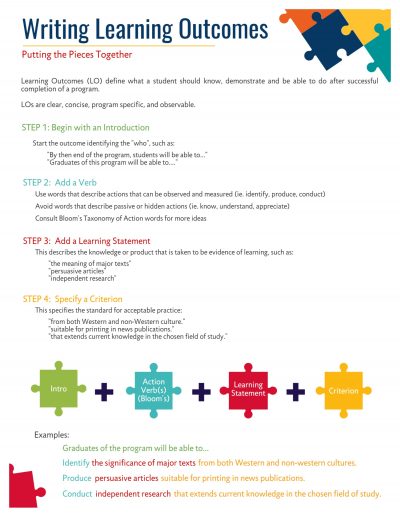What are Learning Outcomes?
Learning outcomes are statements about what students should be able to do as a result of the instruction received. Well-formed learning outcomes are focused on student’s actual knowledge and abilities, and are demonstrable and measurable. These are different from objectives, which the OQA and TLS view as the intended goals or plans of a course, which state what will be done, not necessarily what students will be able to do.
There are many benefits to explicitly articulating the learning outcomes of your program. It can give you a clearer sense of what holds your program together. It is also helpful to communicate with your students about what you expect of them – this is fair to them, helps avoid misunderstandings, and gives a shared reference point should problems arise. Learning outcomes also help set a (high) minimum standard students should work to meet or exceed. Finally, it allows you to ensure your program activities, assessments, and content are aligned in a coherent way.
Designing effective learning outcomes that measure what your graduates will be able to do upon completion of the program is the first step of the Assessment Cycle.
Writing Effective Learning Outcomes
A great assessment strategy starts with well thought-out and articulated learning outcomes. Once you have established the range of skills your graduates should have, expressing those skills in a clear and measurable way is as easy as 1, 2, 3… 4!
- Begin with a stem or introduction, such as “By the end of this program, students will be able to…”
- Select a verb by consulting with Bloom’s Taxonomy.
- Add a learning statement.
- Specify a criterion.
